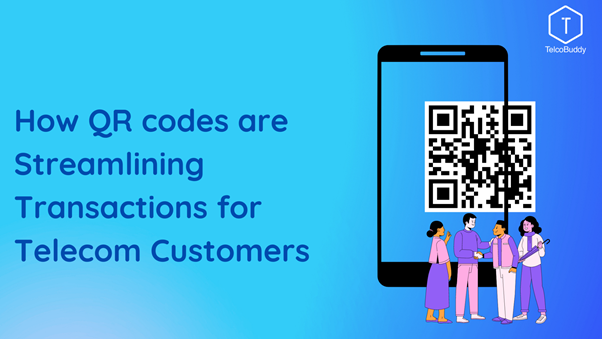
How QR codes are Streamlining Transactions for Telecom Customers
According to a recent study by Juniper Research, global spending using QR codes payment will reach over $3 trillion by 2025. Moreover, this increase is driven by a greater emphasis on improving financial inclusion in developing regions and providing alternatives to established payment methods in developed regions.
What is QR payment?
QR codes are gaining popularity as a payment method worldwide, and their rise has been facilitated by the widespread use of digital wallets. A Japanese company called Denso Wave developed the QR code in the 1990s, primarily for use in the automotive industry for production, tracking, and shipping purposes. However, QR codes have expanded beyond the automotive industry for identification, marketing, and payments.
QR codes generate a pixel pattern that contains a segment of information, including details like merchant information and transaction specifics for digital payments. The popularity of QR payments is expected to increase rapidly as mobile technology advances, and most modern smartphones now come equipped with a built-in QR Code scanner. Additionally, the increased accessibility and streamlining of QR codes for end-users have made them more and more popular.
QR payments offer several key benefits
-They are a frictionless mode of payment methods. Customers can simply scan the QR code using their smartphone, without the need to enter any details manually.
-It offers error-proof transactions with instant reconciliation. This helps reduce the risk of errors in payment processing, making transactions more efficient and accurate.
-QR payments offer a high level of security with Dynamic QR and Static QR options. It allows merchants to generate unique QR codes for each transaction, which helps prevent fraud and unauthorized access to sensitive customer information.
-It is easy to embed QR codes within existing apps, mobile browsers, and web platforms.
Types of QR codes
Static QR code: It contains fixed information such as the merchant's name and bank details for payment. To complete the transaction, the customer scans the code and manually enters the payment amount.
Dynamic QR code: The code changes with each transaction and includes the merchant's name and payment amount. Customers can scan the code for payments, eliminating manual entries and reducing error risks.
The system transfers funds to the merchant's account in real or near-real time. It promptly notifies both customer and merchant upon real-time transaction completion. Moreover, this rapid acknowledgment and availability of funds is critical for business owners and give them immediate access to cash.
Use cases of QR codes in the Telecom Sector :
Payments and Recharge
QR codes are widely used for making payments and recharging mobile plans. By scanning the QR code, the user can easily pay their bills, activate their SIM cards or recharge their mobile plans, DTH.
Value Added Services
Customers can conveniently use QR codes in-app for value-added services, including movie tickets, online shopping, and OTT subscriptions.
P2P Payments
QR code-based systems enable P2P payments, allowing users to send money by scanning unique QR codes.QR code payments are advantageous for flexible businesses with multiple locations
Personalized Services
It offers hyper-personalized services to customers based on their behavior, such as unlimited plans, discounts, cashback, loyalty points, and rewards. This can help CSPs enhance the customer experience and build customer loyalty.
Microinsurance Products
Telecoms can offer microinsurance services to low-income individuals through the mobile-based platform. Vodafone M-Pesa's microinsurance products such as life, health, and personal accident insurance can be easily purchased and managed on their mobile app.
Customers can enroll in coverage, pay premiums, and file claims using their mobile devices, making insurance more accessible and affordable.
Want to launch QR payment solutions in 2023?
Talk to us to see how Telcobuddy QR Payment solutions are enabling the shift to smart payments with embedded dynamic QR, merchant onboarding, hyper-personalized offers, and more.
